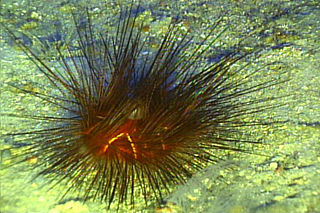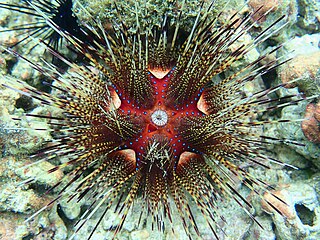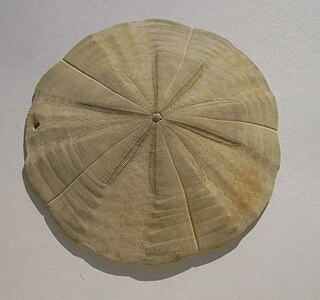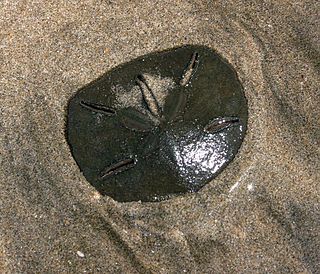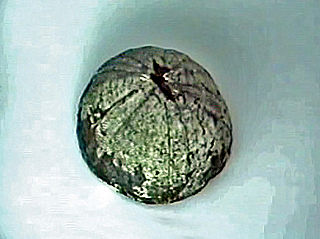| Astropyga | |
|---|---|
 | |
| Astropyga radiata | |
| Scientific classification | |
| Kingdom: | Animalia |
| Phylum: | Echinodermata |
| Class: | Echinoidea |
| Order: | Diadematoida |
| Family: | Diadematidae |
| Genus: | Astropyga John Edward Gray, 1855 |
| Species | |
Astropyga is a genus of sea urchins of the family Diadematidae. Their armour is covered with spines. Astropyga was first scientifically described in 1855 by John Edward Gray. [1] [2]

Sea urchins or urchins are typically spiny, globular animals, echinoderms in the class Echinoidea. About 950 species live on the seabed, inhabiting all oceans and depth zones from the intertidal to 5,000 metres. Their tests are round and spiny, typically from 3 to 10 cm across. Sea urchins move slowly, crawling with their tube feet, and sometimes pushing themselves with their spines. They feed primarily on algae but also eat slow-moving or sessile animals. Their predators include sea otters, starfish, wolf eels, and triggerfish.
Family is one of the eight major hierarcical taxonomic ranks in Linnaean taxonomy; it is classified between order and genus. A family may be divided into subfamilies, which are intermediate ranks between the ranks of family and genus. The official family names are Latin in origin; however, popular names are often used: for example, walnut trees and hickory trees belong to the family Juglandaceae, but that family is commonly referred to as being the "walnut family".

The Diadematidae are a family of sea urchins. Their tests are either rigid or flexible and their spines are long and hollow.
